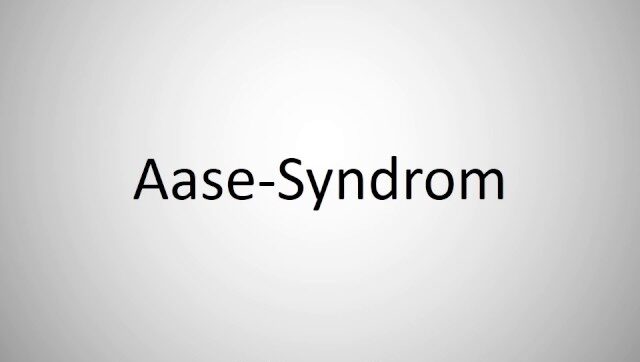Aase syndrome, also known as Aase-Smith syndrome, is a rare genetic disorder characterized by congenital anemia and a range of skeletal abnormalities. This syndrome is named after Dr. Jon Morton Aase and Dr. David Weyhe Smith, who first described it. The exact cause of Aase syndrome is not well understood, but it is thought to be inherited in an autosomal dominant pattern, meaning only one copy of the altered gene is sufficient to cause the disorder.
Symptoms
The symptoms of Aase syndrome can vary widely among affected individuals but commonly include:
- Anemia: This is usually evident at birth or shortly thereafter. The anemia is often due to underdevelopment of bone marrow, which leads to decreased production of red blood cells.
- Skeletal Abnormalities:
- Triangular face with a high forehead
- Abnormalities of the thumbs, such as triphalangeal thumbs (thumbs with three phalanges instead of two)
- Cleft palate or cleft lip
- Short stature
- Joint contractures (limited movement of certain joints)
- Other Physical Features:
- Low-set ears
- Small, narrow shoulders
- Pale skin due to anemia
- Congenital heart defects (in some cases)
- Delayed growth and development
Causes
The precise cause of Aase syndrome remains unknown, but it is believed to result from genetic mutations. The condition appears to follow an autosomal dominant inheritance pattern, though the specific genes involved have not been conclusively identified. In autosomal dominant inheritance, one copy of the mutated gene in each cell is enough to cause the disorder.
Treatment
Treatment for Aase syndrome is symptomatic and supportive. It typically involves a multidisciplinary approach, including:
- Management of Anemia:
- Blood transfusions to manage severe anemia, especially in infants and young children.
- Bone marrow stimulants may be used to encourage the production of red blood cells.
- Surgical Interventions:
- Correction of skeletal abnormalities such as cleft palate or thumb anomalies.
- Treatment of congenital heart defects if present.
- Supportive Therapies:
- Physical therapy to address joint contractures and improve mobility.
- Occupational therapy to assist with daily activities and improve the quality of life.
- Regular monitoring and follow-up with various specialists (hematologists, cardiologists, orthopedic surgeons, etc.).
Prevention
As Aase syndrome is a genetic condition, there is no known method for its prevention. However, genetic counseling may be beneficial for families with a history of the disorder. Prenatal testing and genetic screening can help prospective parents understand the risks and make informed decisions.
Conclusion
Aase syndrome is a rare genetic disorder with significant variability in symptoms and severity. While there is no cure, supportive treatments can help manage the symptoms and improve the quality of life for affected individuals. Ongoing research aims to better understand the genetic basis of the disorder, which may lead to more effective treatments in the future.

































